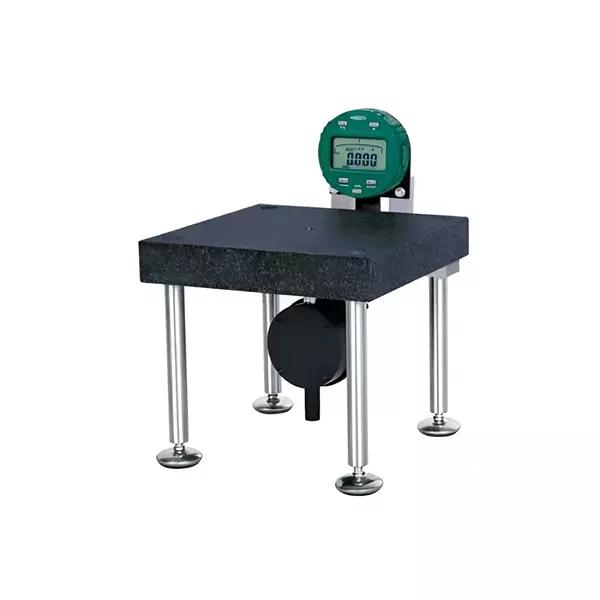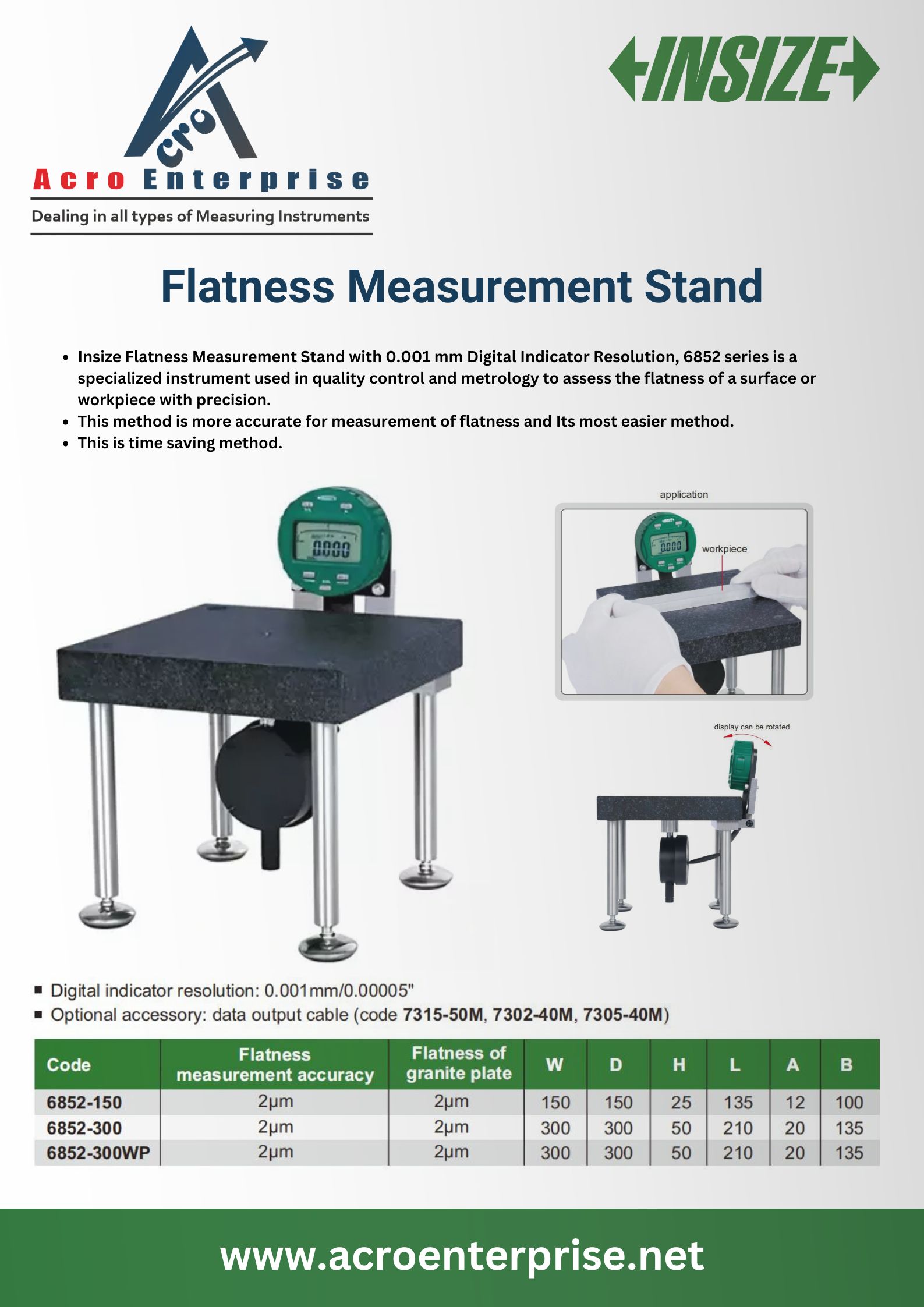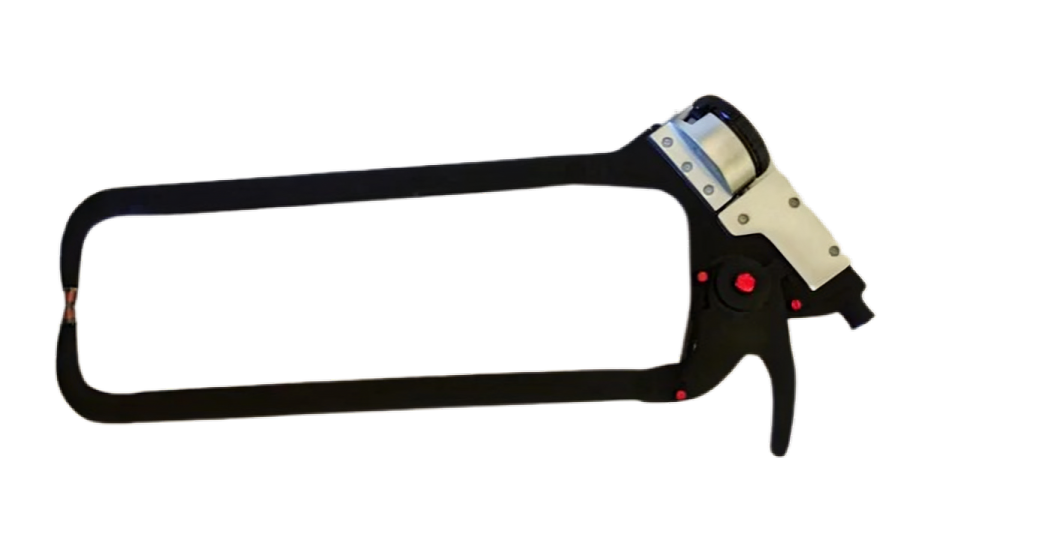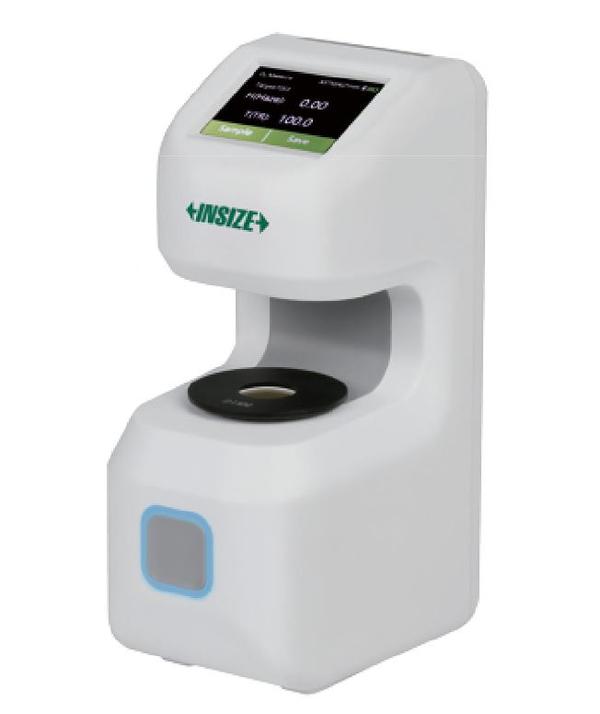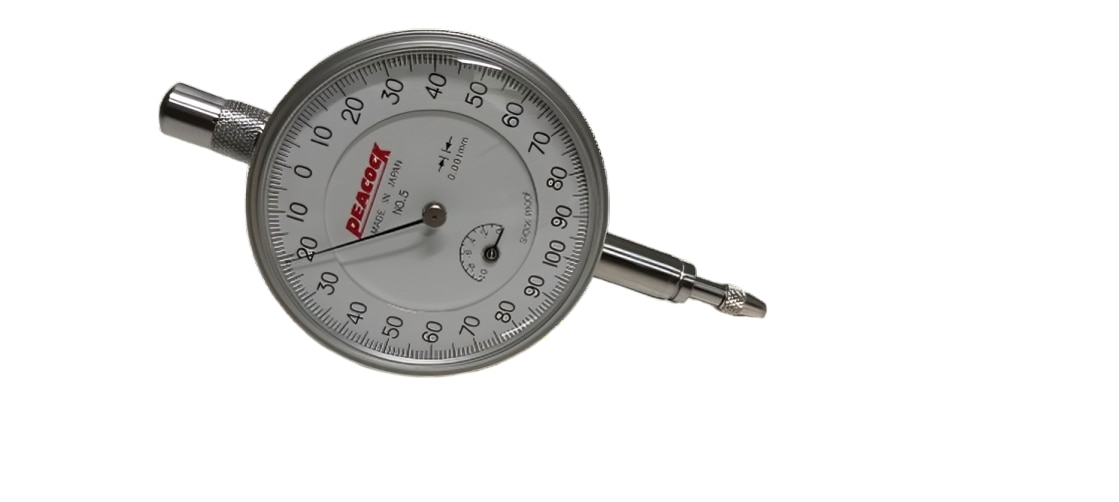Description
Insize Flatness Measurement Stand with 0.001 mm Digital Indicator Resolution, 6852-150 is a specialized instrument used in quality control and metrology to assess the flatness of a surface or workpiece with precision. It is commonly employed in industries such as manufacturing, aerospace, automotive, and engineering, where maintaining precise flatness is crucial for the functionality and performance of components. Here's a detailed explanation of a flatness measurement stand: Components and Features: Base: The measurement stand typically consists of a stable and rigid base that provides a solid foundation for the measuring instrument. Support Structure: Above the base, there is a support structure that holds the measuring device, such as a dial indicator, laser interferometer, or optical flat. Measuring Device: The key component of the measurement stand is the measuring device itself. Depending on the application, this can include dial indicators, electronic probes, laser-based sensors, or optical flats. Adjustment Mechanisms: The measurement stand may feature adjustable components that allow the user to fine-tune the positioning and alignment of the measuring device with respect to the surface being measured. Operation: Setup: The workpiece or surface to be measured is placed on the measurement stand's base or support structure, ensuring it is securely positioned. Measuring Device: The measuring device, which may be a dial indicator, laser sensor, or optical flat, is positioned above the surface to be measured. Alignment: The measuring device is carefully aligned with the surface under examination, ensuring it is parallel and in close proximity without touching. Measurement: Depending on the type of measuring device, the user can take readings to assess the flatness of the surface. For example, a dial indicator measures variations in height, while a laser interferometer or optical flat evaluates interference patterns to determine flatness. Data Collection: Measurement data can be collected manually or electronically, depending on the measuring device and the measurement stand's capabilities. Applications: Quality Control: Flatness measurement stands are used extensively in quality control processes to verify that machined or manufactured parts meet specified flatness tolerances. This is critical in industries such as aerospace and automotive manufacturing. Surface Characterization: They are employed in research and development to characterize and understand the flatness of materials and surfaces, aiding in product design and development. Machining and Grinding: These stands are valuable tools in machining and grinding processes, helping operators ensure the flatness of workpieces during production. Tool Calibration: Flatness measurement stands are used to calibrate and verify the accuracy of other measuring instruments, such as surface profilometers and coordinate measuring machines (CMMs). Advantages: High Precision: Flatness measurement stands offer exceptional accuracy and repeatability in assessing surface flatness. Versatility: They can be used with a variety of measuring devices and adapted to different applications and materials. Objective Assessment: These stands provide objective and quantifiable data, facilitating decision-making in quality control and production processes.

